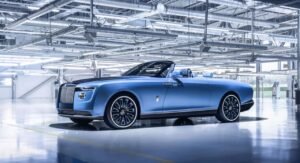Review of Present Auto Ownership Trends
Automobile Ownership Patterns: An Overview
Having a car nowadays is significant and represents a number of cultural and personal values. Numerous automobiles are associated by many with prosperity and wealth. Sometimes, especially for large families or those who rely on particular cars for daily purposes, owning a large number of cars may be more of a need than a luxury. Passion can also drive one to become an automobile owner; enthusiasts may put together collections that demonstrate their love for different makes and models.
Understanding the patterns in car ownership enables one to understand both more significant social concerns and personal motivations. It illustrates the relationship between the purchasing power of the people and the social beliefs that society most firmly holds about transportation. As demonstrated by the range of car ownership, from single-car households to those with massive collections, different demographic groupings have different aspirations and ways of life.
The fascinating realm of car ownership will be examined in this blog post, along with the biggest collections and their reasons. Using these trends, we want to determine the basic causes of people’s excessive car purchases and how these decisions reflect their unique circumstances and objectives. Whether they are a necessary practicality, a beloved past time, or a status symbol, the reasons for owning a vehicle are as varied as the people who own them.
HTML
History of Auto Ownership Overview
Having a car is closely related to industrialization and technical advancement. Around the beginning of the 20th century, cars were a luxury product exclusively accessible to the wealthy. A revolution was signaled by Henry Ford’s 1908 introduction of the Model T. Ford’s utilization of an assembly line manufacturing method allowed the average American to now afford a car. At this period, mass car ownership began, fundamentally altering social interactions and modes of transportation.
Through the 1920s and 1930s, a vehicle came to symbolize status and freedom. The middle class’s growth at this period raised demand for cars even further. By providing a variety of models to fit a variety of interests and budgets, manufacturers such as General Motors helped to integrate the car into American culture. But driving did not really take off until the post-World War II economic boom. Driven by the GI Bill and a burgeoning economy, suburbanization turned having an automobile from a convenience to a need.
When driving became a necessary part of both business and play in the 1950s and 1960s, car culture took off. Drive-in cinemas and quick food restaurants sprang up, and highways expanded to accommodate auto owners. Worldwide car ownership also increased at that time, particularly in Western Europe and Japan, where the economic recovery raised demand for private cars.
As the late 20th and early 21st century arrived, the patterns of car ownership continued to shift. The unpredictable oil prices and growing environmental consciousness have stoked interest in electric and fuel-efficient cars. Moreover, urbanization and economic developments increased car ownership in nations like China and India. These days, owning a car is a complex topic impacted by several factors, such technological advancements, cultural shifts, and economic downturns.
Top Auto Collectors: The Largest Collections
Car collecting has gone beyond ownership and become an art form for some of the most passionate enthusiasts worldwide. Few of these aficionados are well-known for their extensive and well selected collections. Famous individuals who have assembled some of the largest and oddest car collections in the world include Ralph Lauren, the Sultan of Brunei, and Jay Leno.
The most well-known car collector is arguably comedian and television personality Jay Leno. Located in several large warehouses outside of Burbank, California, his collection includes over 180 cars and 160 motorcycles. Leno has driven everything, from rare European sports cars to classic American muscle vehicles. Above and above basic ownership, as he regularly shows on his popular web series, “Jay Leno’s Garage,” he is an avid car restorer and maintenance.
Sultan Hassanal Bolkiah of Brunei owns the largest private car collection in the world. An estimated $5 billion is worth of cars in his collection of around 7,000. Custom Bentley, Ferrari, and Rolls-Royce cars are among the incredible collection owned by the Sultan. His passion of automobiles is evident in the distinctiveness and customization of his vehicles; he often asks for special models that are not available to the general public.
One other well-known figure in the field of car collecting is fashion designer Ralph Lauren. His more than $300 million collection is well-known for its grace and historical relevance. Lauren mostly owns vintage cars, like rare Ferraris, Bugattis, and Porsches. The many times his automobiles are on display at museums and important motor shows demonstrates his passion of the inventiveness and design of automotive history. Lauren’s selection shows his remarkable taste and admiration for the beauty of vintage automobiles.
These are the best car collectors; each one of them enriches their collections with their own perspective and passion. Their biographies remind us of the dedication required to build and maintain collections of cars that are so vast and varied that, among automobile enthusiasts, they are true idols.
Costs of Car Ownership
Wealth and car ownership are strongly correlated. Financial circumstances mostly determine how much one can buy, keep, and grow their car collection. Even while possessing a large number of cars is frequently seen as a status symbol, their costs of them much exceed the initial investment. Rich families can often afford these expenses more easily, which allows them to relish the pleasure of having several cars.
First off, the year, model, and brand of an automobile can all have a big impact on its buying price. Especially high-end cars fetch outrageous prices of hundreds of thousands or even millions of dollars. Probably only the wealthy can buy premium brands like Ferrari, Bentley, and Rolls-Royce. Rich consumers find these products appealing because of their uniqueness, excellent performance, and design.
Keeping a fleet of cars may become costly after the first outlay. To stay in good working order, these vehicles require regular servicing, repairs, and maintenance. Sometimes expensive specialist maintenance is required for luxurious and powerful vehicles. Storage becomes more important when one owns multiple cars. Rich individuals could make investments in garages designed especially for them or in climate-controlled storage facilities to ensure the durability and weather protection of their belongings.
Insuring a car is another pricey outlay. In general, more expensive insurance is associated with more expensive cars. The people who pay the higher insurance costs for specific high-end or luxury cars are the wealthy car owners. A lot of the time, full coverage is needed to protect against potential risks like theft, damage, or accidents.
Basically, owning numerous cars and keeping them maintained is closely related to financial status. A wealthy person has it easier to buy cars and to cover the ongoing expenses of keeping and enjoying a varied collection. It is therefore scarcely unexpected that changes in car ownership often follow more general trends in the distribution of income in society.
Different Car Ownership Patterns Among Cultural Groups
Economic status, degree of urbanization, and cultural views on cars are only a few of the many factors affecting the huge differences in car ownership patterns between cultures and geographical areas. Particularly high proportions of car owners reside in industrialized economies like the US. This is explained by a well developed road network, the general availability of disposable resources, and a cultural tendency toward independent mobility. Conversely, car ownership is frequently less widespread in developing nations due to a lack of reasonably priced cars and lower income levels.
Urbanization has a big effect on car ownership patterns as well. When public transportation systems are efficient and well-integrated, as in Western Europe, the need for private cars often decreases. Large bus and metro systems, such as those in Berlin and Paris, provide dependable and fairly priced alternatives to owning a car. But in more suburban or rural areas with limited public transportation options, people are more inclined to buy vehicles to satisfy their mobility needs.
The perceptions society has of cars may have an impact on driving behaviors. Small, fuel-efficient cars are highly prized culturally in countries like Japan, where space is limited and urban traffic is a serious issue. Tight parking restrictions and high vehicle levies are two further measures that discourage excessive car ownership. However, larger vehicles—trucks and SUVs, for instance—are more appropriate for long-distance driving and challenging terrain, so they are frequently selected in breathtaking locations like Australia.
In a few places, there are also peculiar traditions around car ownership. In Scandinavia, for example, environmentally friendly cars are quite popular due to social standards and government incentives. strong network of charging stations is one of the reasons why the number of hybrid and electric cars is growing. Similar in design, two-wheelers—scooters and motorcycles—are more common than cars in countries like India because they are less expensive and simpler to ride through congested cities.
Regulators, manufacturers, and urban planners need to be mindful of these regional and cultural differences in car ownership as they negotiate the difficult terrain of global mobility. Considering the unique needs and preferences of different communities, they can more effectively manage the advantages and issues brought about by shifting car ownership trends.
Ownership of Cars and Technology
The way people buy, utilize, and maintain their cars has changed because of technological advancements, which also greatly influence the patterns of car ownership. growing acceptance of electric vehicles (EVs) is an intriguing phenomenon. Better battery technology and growing environmental concerns are the primary causes of the increasing number of individuals choosing electric cars. This tendency is seen in the increasing market dominance of companies like Tesla, which pioneered the electric vehicle industry. Thanks to government subsidies and an expanding network of charging stations, more people may now buy electric cars.
Another important technological advancement are autonomous vehicles. Leading self-driving startups Waymo and Tesla will soon totally change the automotive industry. Perhaps reducing the need for individual car ownership, autonomous cars are supposed to increase efficiency and safety. The way people own cars might entirely shift when shared, self-driving vehicles become the norm.
Uber and Lyft are two more ride-sharing businesses that have had a big impact on car ownership trends. Given how easily and affordably ridesharing is, some city dwellers have given up ever having a car. These services offer an acceptable alternative to having a personal vehicle in big cities where parking and maintenance can be costly and challenging.
Digital markets have greatly simplified auto buying, selling, and collecting. Carvana and AutoTrader are two examples of internet marketplaces that have made it easier for consumers to compare prices, read reviews, and finish transactions from the comfort of their homes. Social media and internet forums have also given enthusiasts of cars places to manage large collections and communicate with other collectors.
Large car collections are now easier to manage thanks to technology as well. Software and apps now allow collectors to monitor vehicle performance, adhere to maintenance schedules, and even automate some car care chores. The ease with which people may now own and maintain many cars thanks to these technologies has accelerated the desire of collectors and enthusiasts to buy more cars.
Ownership of a Car and Sustainability
When one considers the carbon footprint of one automobile, having several has significant environmental consequences. The carbon dioxide released by the internal combustion engines in conventional cars worsens air pollution and global warming. Multiple cars could be more harmful to the environment.
Acknowledging these issues, some car collectors and owners are beginning to choose more ecologically responsible options. One part of this is investing in electric and hybrid cars, which produce less pollution than conventional gasoline-powered cars. Particularly eco-friendly are electric vehicles, which may run on renewable energy sources and emit no pollutants. Advancements in battery technology and charging infrastructure further make EVs more approachable and practical for everyday use.
To reduce their environmental impact, car owners are considering other forms of transportation in addition to upgrading to greener models. Ridesharing, carpooling, and public transportation are practical methods to lower the number of cars on the road and, thus, lower emissions overall. Furthermore, a shift toward more ecologically friendly commuter habits is reflected in the growing urban walking and cycling movement.
Car sharing is another growingly popular substitute for long-term traditional car ownership. Car sharing programs reduce the need for individuals to purchase several vehicles by allowing numerous people to use a fleet. Together with requiring fewer cars, this idea promotes resource efficiency and reduces traffic congestion.
The automotive industry is responding to growing public awareness of environmental issues with innovations that stress sustainability. Among the technologies that automakers are promoting are driverless electric cars and hydrogen fuel cells, in addition to modern fuel-efficient engines. All things considered, these programs represent a significant development in more ecologically friendly personal mobility.
So, future car ownership
When one looks at the situation, it is evident that the patterns of car ownership are shifting. The prior trends of car ownership, which were dominated by affluent people and countries with robust economies, are shifting for a variety of reasons. More individuals are considering how their cars impact the environment, which is largely the cause of this change. The growing popularity of electric and hybrid cars—which are thought to be more ecologically friendly than traditional gasoline-powered cars—demonstrates this shift.
Future car ownership is also greatly influenced by technical advancements. Autonomous cars are supposed to fundamentally alter how we view owning a car. When autonomous vehicles proliferate, having a personal vehicle may become less appealing, especially in places where shared mobility services can be a more sensible and reasonably priced choice. This tendency is exacerbated by the rise of ride-sharing applications, which provide a substitute for traditional car ownership patterns.
Moreover, the state of the economy has an influence on the patterns of car ownership. The condition of the global economy determines how much people can afford to buy and maintain cars. Sometimes, in undeveloped countries, driving is seen as a symbol of both personal and financial fronts. But the obvious inclination in developed countries to place experiences above material possessions would discourage people from buying cars.
priorities and policies of the government will also affect car ownership. It seems obvious that programs designed to reduce carbon emissions and promote public transit would affect the market for private vehicles. First measures toward a more sustainable future include financing and improvements to the infrastructure for charging electric cars. These advancements taken together will drastically alter car ownership, reflecting broader cultural shifts toward sustainability, technology integration, and economic flexibility.
